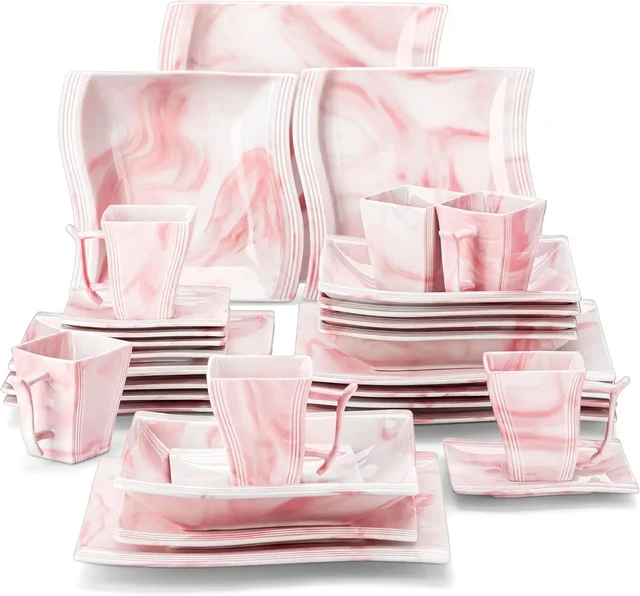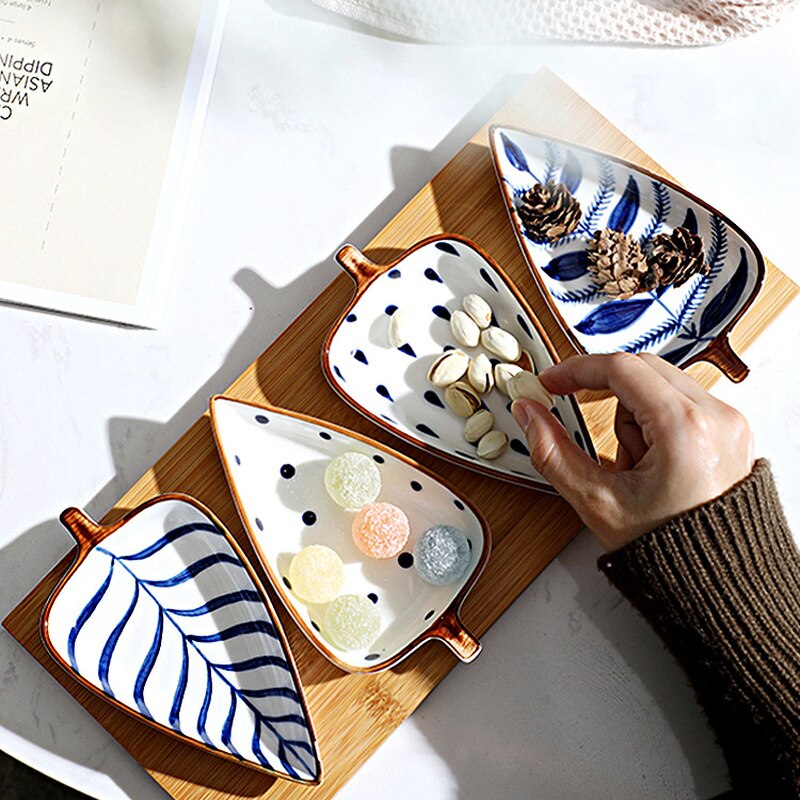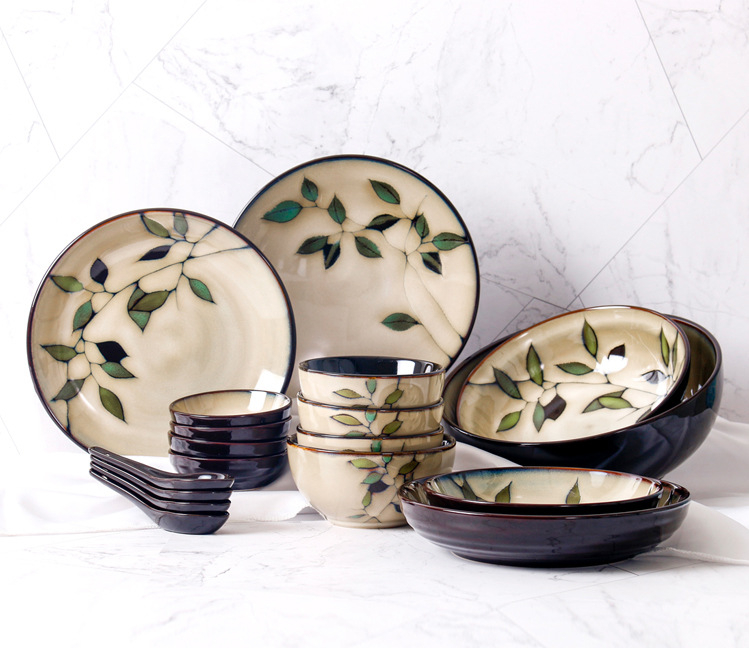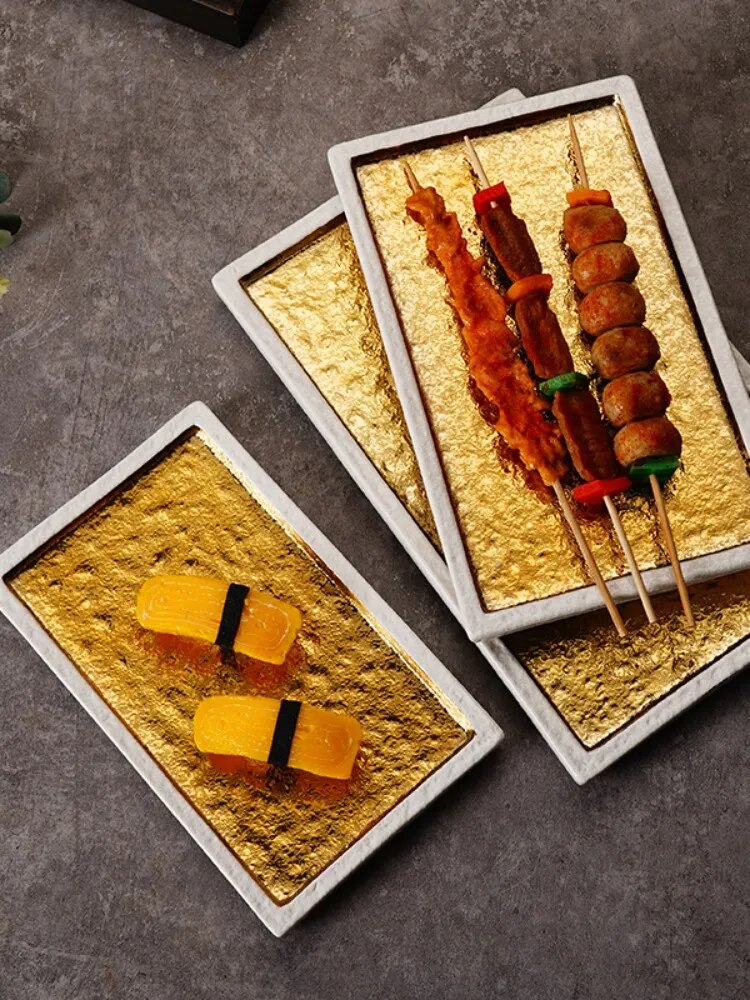
Introduction
Tea drinking is more than just a daily habit—it is a deeply rooted cultural tradition that spans centuries and civilizations. From the intricate Chinese tea ceremonies to the refined elegance of British afternoon tea, tea has long been associated with sophistication, mindfulness, and social connection. The vessels used to serve tea play an equally important role in the experience, enhancing not only the presentation but also the flavor and ritual of each cup.
A beautifully crafted tea set elevates tea drinking from a simple routine to an art form. The right tea set enhances the aroma, taste, and temperature retention of the tea while also reflecting the drinker’s personal style and cultural appreciation. Whether it’s the delicate porcelain of an English tea set, the traditional Yixing clay of a Chinese tea set, or the sleek modern designs of contemporary tea sets, every detail contributes to the overall sensory experience.
Beyond functionality, high-end tea sets are a statement of elegance and refinement, much like the luxurious tableware curated by Lux Asian Plates. A well-paired tea set and tableware collection can transform any gathering into a sophisticated affair, blending tradition with trendy aesthetics. Just as the perfect teacup enhances the taste of fine tea, premium tableware enhances the dining experience, creating an ambiance of luxury and cultural appreciation.
In this guide, we will explore the fascinating history of tea sets, the significance of various styles, and how these exquisite pieces enhance daily tea rituals. Whether you are a passionate tea enthusiast or a host looking to impress your guests, understanding the art of tea sets will help you elevate your lifestyle and create unforgettable tea experiences.
The History of Tea Sets: A Timeless Tradition
Tea drinking is an ancient practice that dates back thousands of years, originating in China before spreading across the world. Throughout history, tea has been more than just a beverage—it has played a significant role in social rituals, religious ceremonies, and cultural traditions. The tea sets used in these practices have evolved over time, reflecting advancements in craftsmanship, artistic influences, and shifting cultural preferences.
Origins of Tea Drinking in China and Its Spread to Europe
Tea culture began in China over 5,000 years ago, with legend attributing its discovery to Emperor Shen Nong in 2737 BCE. Early tea consumption was primarily medicinal, but by the Tang Dynasty (618–907 CE), tea drinking had become a refined social ritual, giving rise to the development of specialized tea ware. The Chinese crafted their tea sets from materials like porcelain, celadon, and Yixing clay, each known for its ability to enhance the tea-drinking experience.
During the 16th and 17th centuries, European traders, particularly the Portuguese and the Dutch, introduced tea to the West. As tea became a fashionable drink among the aristocracy, European artisans began producing their own tea sets, inspired by Chinese porcelain but incorporating Western artistic elements. The tradition of English afternoon tea, popularized by the Duchess of Bedford in the 19th century, further cemented tea’s status as a symbol of sophistication.
Evolution of Tea Sets from Traditional Ceramics to Modern Luxury Designs
As tea culture spread across different continents, the design and materials of tea sets evolved. In China, Yixing clay teapots became prized for their porous texture, which absorbed the flavors of tea and enhanced the brewing process. In Japan, the tea ceremony led to the creation of rustic, hand-crafted ceramic tea bowls that reflected the principles of wabi-sabi (the beauty of imperfection).
Meanwhile, in Europe, bone china and fine porcelain became the preferred materials for tea sets, often adorned with intricate floral patterns and gilded edges. The Industrial Revolution made these tea sets more widely available, allowing tea drinking to become a common practice among the middle class.
Today, these blend tradition with innovation, featuring sleek minimalist designs, heat-retaining glass, and even smart technology for precision brewing. While the aesthetics may change, the purpose remains the same—to elevate the tea-drinking experience and bring people together over a shared ritual.
How Tea Culture Influences Modern Tea Set Designs and Functions
The global appreciation for tea has inspired contemporary designers to merge cultural traditions with modern functionality. Traditional Chinese tea sets continue to influence luxury collections, with high-end brands incorporating elements like bamboo handles, calligraphy engravings, and handcrafted ceramic finishes.
At the same time, these cater to today’s fast-paced lifestyles, offering convenience without compromising elegance. Features like built-in infusers, double-walled insulation, and ergonomic designs ensure that tea lovers can enjoy their brew with ease.
Whether you prefer a classic English tea set for hosting afternoon tea parties or a minimalist modern tea set for daily use, the right choice enhances both the aesthetic and sensory pleasure of drinking tea. By pairing these sets with Lux Asian Plates’ exquisite tableware, you can create a luxurious dining experience that pays homage to the timeless tradition of tea culture.
Exploring the Elegance of Preparing Relaxing Drink
English Tea Sets are synonymous with refinement and sophistication, embodying the rich traditions of British tea culture. With roots dating back to the 17th century, these tea sets have become a staple for elegant gatherings, social events, and luxurious tea moments. Their delicate designs, intricate craftsmanship, and timeless appeal make them a must-have for tea enthusiasts and those who appreciate classic aesthetics.
The Sophistication of English Tea Traditions and Their Influence on Tea Sets
The tradition of this brewed drinking gained popularity in the 17th century when tea was introduced to Britain by the Portuguese princess Catherine of Braganza. By the 18th and 19th centuries, tea drinking had evolved into an essential social ritual among the British elite. The tradition of afternoon tea, popularized by the Duchess of Bedford, became a daily practice that brought people together for a refined yet relaxed gathering.
To complement these tea-drinking customs, these were designed with elegance and artistry in mind. The craftsmanship of these sets reflects the grandeur of European fine dining and the formality of British social culture. Over the years, the influence of these traditions spread worldwide, shaping how tea is served and enjoyed in various cultures.
Features of English Tea Sets: Porcelain Craftsmanship, Floral Patterns, and Delicate Designs
These are renowned for their high-quality materials, artistic details, and sophisticated aesthetics. Some of the defining features include:
- Porcelain Craftsmanship: Traditional English tea sets are crafted from fine porcelain or bone china, materials known for their delicate yet durable nature. Bone china, in particular, is highly prized for its lightweight feel and translucent appearance.
- Intricate Floral Patterns: Many feature exquisite floral motifs inspired by nature, often with pastel hues, gold accents, or hand-painted designs. These patterns add a touch of femininity and charm to the tea-drinking experience.
- Delicate Teacups and Saucers: These typically include teacups with elegantly curved handles and matching saucers, designed for a graceful and comfortable grip.
- Matching Teapots, Creamers, and Sugar Bowls: A complete English tea set includes a teapot, creamer, and sugar bowl, all crafted to complement the teacups in style and design.
Small in Size, Big in Charm
Try this to capture the beauty and elegance of traditional tea sets in a compact form. Though small in size, these sets hold immense charm, making them a favorite for collectors, decorators, and tea lovers alike. Their intricate craftsmanship, delicate details, and cultural significance make them not just functional but also highly desirable for aesthetic appreciation.
The Appeal of Miniature Tea Sets in Decoration, Collectibles, and Cultural Appreciation
These have been treasured for centuries, often reflecting the artistry and craftsmanship of their full-sized counterparts. These tiny tea sets serve multiple purposes beyond tea-drinking, including:
- Home Decoration: Miniature tea sets add a whimsical, vintage touch to interior spaces. Displayed on shelves, mantels, or dining tables, they create a visually appealing accent that enhances the charm of a room.
- Collectibles with Cultural Significance: Many are inspired by various tea traditions, from classic English tea sets to Japanese and Chinese designs. Collectors appreciate them for their cultural representation, detailed artistry, and historical value.
- Educational and Nostalgic Appeal: In some cultures, miniature tea sets have been used as playsets for children, introducing them to tea traditions at an early age. Some sets even serve as heirlooms, passed down through generations.
Perfect Gifts or Travel-Friendly Options for Tea Lovers
These make thoughtful and unique gifts for tea enthusiasts and collectors. Their compact size makes them ideal for:
- Gift-Giving for Special Occasions: Whether for birthdays, weddings, anniversaries, or housewarming gifts, a miniature tea set is an elegant and meaningful present. Their intricate designs and charming appeal make them stand out as a luxurious and sentimental gift.
- Portable Tea Experience: For tea lovers who enjoy their ritual on the go, these offer a travel-friendly alternative. Their small size allows for easy packing, making them perfect for outdoor picnics, business trips, or vacations.
Where Tradition Meets Contemporary Elegance
Modern Tea Sets redefine tea culture by blending traditional elements with contemporary aesthetics. These sets cater to tea lovers who appreciate both functionality and sleek, modern design. With minimalist styles, innovative materials, and ergonomic features, these offer a fresh take on the age-old tradition of tea drinking.
Innovative Designs That Redefine Tea Drinking
Unlike classic tea sets that emphasize intricate patterns and elaborate details, modern tea sets focus on simplicity, functionality, and elegance. Key characteristics include:
- Minimalist Aesthetics: Clean lines, neutral tones, and sophisticated finishes create a sleek, timeless appeal.
- Unique Shapes & Structures: Asymmetrical cups, geometric teapots, and innovative handle designs add a contemporary touch.
- Versatile Appeal: Whether used for a casual morning tea or a high-end dining experience, modern tea sets suit various settings.
Each material caters to different preferences, whether one values the elegance of glass, the tradition of ceramics, or the durability of stainless steel.
Perfect for Contemporary Homes and Stylish Gatherings
Modern tea sets are designed to complement contemporary interior aesthetics, making them a perfect addition to stylish homes. Their functional and artistic appeal makes them suitable for:
- Urban and minimalist spaces where clean designs enhance the overall ambiance.
- Tea enthusiasts who enjoy modern living but appreciate timeless traditions.
- Hosting elegant social gatherings, where modern tea sets serve as both conversation starters and functional tableware.
A Deep Connection to Culture and Tradition
This collection holds a deep cultural significance, embodying centuries of tradition and craftsmanship. These tea sets are not merely functional but are deeply connected to the ancient rituals of Chinese tea ceremonies, which celebrate not only the tea itself but also the art of hospitality and mindfulness.
Rich Cultural Significance
Tea in China has been an essential part of the culture for over 4,000 years, evolving from a medicinal beverage to a central social ritual. Chinese tea sets are designed to enhance the tea-drinking experience by reflecting the spiritual and social aspects of this ritual. Some key features that define these sets include:
- Small, Simple Designs: These are often minimalistic, with elegant curves and simplistic designs that highlight the purity and flavor of the tea itself.
- Material and Craftsmanship: The finest porcelain, clay, and Yixing stoneware are often used, with many sets being hand-crafted by skilled artisans. Yixing teapots, in particular, are prized for their ability to retain and enhance the flavor of tea over time.
- Tea Ceremony Rituals: They are designed for specific ceremonies, such as the Gong Fu tea ceremony, where the tea is brewed multiple times with a focus on precision, patience, and respect for the art.
Why Chinese Tea Sets Are Ideal for Cultural Enthusiasts
For those who appreciate history, culture, and the art of tea-making, these are an excellent choice. These sets offer:
- An Authentic Cultural Experience: They allow tea drinkers to partake in the age-old Chinese tradition, immersing themselves in centuries of cultural significance.
- Aesthetic Appeal: The minimalist designs often feature intricate details, like Chinese symbols or delicate painting, adding beauty and depth to any setting.
- Mindfulness: The act of using a Chinese tea set encourages slowing down and appreciating the present moment, offering a mindful experience that promotes peace and relaxation.
Why Choose Lux Asian Plates for Your Tea Set Collection?
When it comes to elevating your tea-drinking experience, the right tea set is essential, but so is the tableware that accompanies it. Lux Asian Plates offers a stunning collection of fine tableware that complements the elegance of your tea sets, enhancing both aesthetic appeal and functionality. Whether you are hosting an intimate gathering or simply enjoying a quiet tea moment, the combination of high-quality tea sets and exquisite Asian-inspired plates transforms any tea session into a luxurious experience.
Unparalleled Craftsmanship and Design
At Lux Asian Plates, every piece of tableware is meticulously crafted to offer exceptional beauty and functionality. The collection features plates that blend timeless traditional artistry with contemporary design, making them the perfect match for any tea set.
Here’s why Lux Asian Plates stands out:
- Exquisite Designs: The plates come in a variety of intricate patterns, from delicate floral motifs to minimalist, modern aesthetics, ensuring they suit any tea set or occasion.
- High-Quality Materials: Crafted from premium porcelain, ceramic, and fine china, these plates are built to last while offering a luxurious feel.
- Functional and Elegant: Each piece in the collection is designed not only to look stunning but also to provide practical use, whether for serving tea, snacks, or simply adding elegance to your table setting.
Complete the Perfect Tea Experience
A beautiful tea set deserves equally exquisite tableware to accompany it. Lux Asian Plates offer plates that enhance the entire tea experience, whether you’re serving delicate pastries with your tea or using them as elegant backdrops for your tea rituals. The combination of premium tea sets and luxurious Asian-inspired plates ensures that every tea moment feels special.
Here’s how Lux Asian Plates complement your tea set:
- Versatile for Any Occasion: Whether you’re hosting a formal afternoon tea or a casual tea gathering, these plates are designed to be versatile and perfect for all settings.
- Enhanced Aesthetics: The intricate designs of the plates elevate the visual appeal of your tea set, making them a conversation starter during any gathering.
- Cultural and Sophisticated: Just like your chosen tea set, these plates are a tribute to fine craftsmanship, reflecting cultural richness and sophistication.
Conclusion: Elevating Every Tea Moment with Lux Asian Plates and Premium Tea Sets
In today’s fast-paced world, taking the time to savor a cup of tea can be a moment of tranquility and sophistication. Whether you are enjoying an intimate afternoon tea or hosting a gathering with friends, the right tea set and accompanying tableware play a pivotal role in creating a memorable experience. Lux Asian Plates and the premium tea sets from Teaset Lux offer an unparalleled combination of elegance, functionality, and artistry that will elevate any tea-drinking occasion.
From the timeless beauty of English to the compact charm of Miniature, the modern sophistication of Modern, and the rich cultural heritage of Chinese Tea Sets, there is a perfect tea set to match every style and taste. When paired with the exquisite tableware from Lux Asian Plates, your tea sessions will be transformed into luxurious rituals, enveloping you in beauty and tradition.



